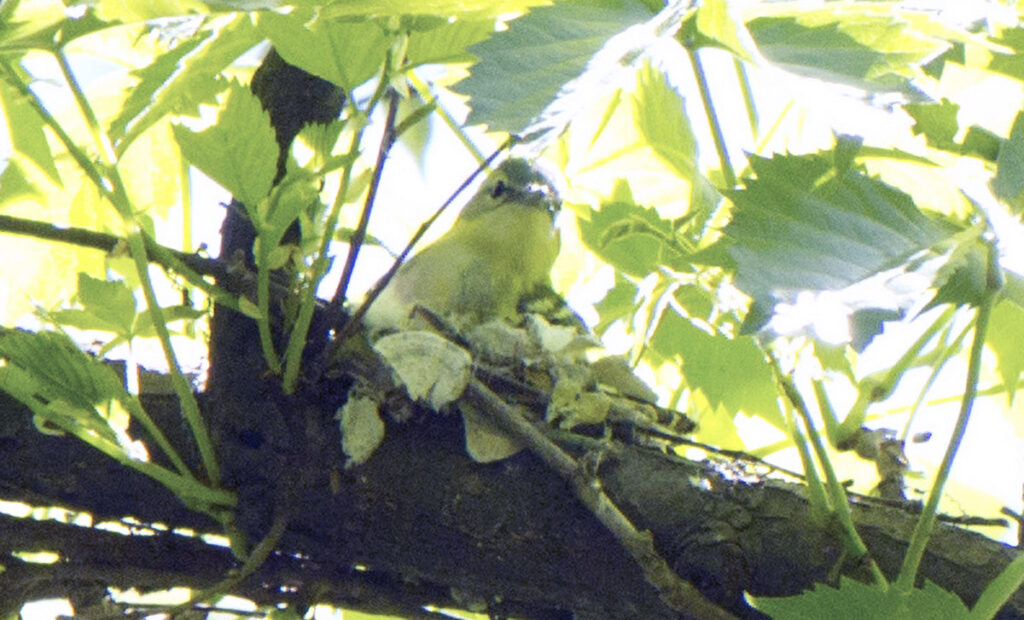Cerulean Warblers (Setophaga cerulea) are a Nearctic-Neotropical migratory songbird species in decline. During the breeding season, Cerulean Warblers nest in deciduous forests of the eastern United States and Canada. Over about the last twenty years, much research has focused on improving our knowledge of the biology of this species to inform conservation and reverse this decline. This research has led to the development of regional guidelines for managing forests to improve habitat quality for Cerulean Warblers in the Appalachian Mountains and the Mississippi Alluvial Valley.
Although we have learned much about the species during this time, research on the ecology of Cerulean Warblers has largely focused on populations in the Appalachians, Ontario, and the Midwest. The Ozark region of the south-central United States (mostly including northern Arkansas and southern Missouri) has a relatively large population of Cerulean Warblers, but little is known about their ecology in this region. Specifically, estimates of demographic rates from this regional population would be important to accurately model the overall population. Additionally, information on habitat selection by Cerulean Warblers in the Ozarks would be necessary to determine if management guidelines from other regions are applicable to the Ozarks.
To help fill these knowledge gaps, we studied Cerulean Warblers in riparian forests in the Ozark region, specifically along the Buffalo National River in northern Arkansas, from 2018 to 2020. We studied habitat selection at territory and nest scales, documented their breeding biology, estimated the apparent survival of males within and between breeding seasons, and estimated territory size. Our results were recently published in the Journal of Field Ornithology.
We found both similarities and differences between patterns of habitat selection by Cerulean Warblers in the Ozarks and results from other regions. Most prominently, Cerulean Warblers in our study selected habitat characterized by large trees at all spatial scales. This is consistent with the results of several studies from other regions. However, regional variation also existed, particularly in relation to topography and tree species composition. Cerulean Warblers in our study were not selective of topographic features, but in other regions they often prefer steep slopes. Additionally, although some previous studies have found Cerulean Warblers to prefer white oaks, in our study males appeared to avoid white oaks. This may be because Cerulean Warblers in our study selected territories close to the river, in areas where white oaks are relatively scarce.
One interesting and novel observation in this study was related to dispersal of a female Cerulean Warbler between years. In 2018, we color-banded three females that we captured incidentally when attempting to capture males. In 2019, we observed one of these females nesting > 6 km from her 2018 nest site and paired with a different male. (Her mate from 2018 did not return.) She successfully fledged young in both years. Female Cerulean Warblers have remained understudied because they are difficult to capture and even to observe. Better understanding the ecology of females is an important knowledge gap that remains for future studies.
Although our study has provided useful information about the ecology of Cerulean Warblers in the Ozarks, which will be valuable to the global efforts to conserve the species, further research will be needed to comprehensively understand their ecology in the region. In the Ozarks, Cerulean Warblers also breed at sites on higher-elevation slopes away from riparian zones, such as in the Ozark National Forest and upstream areas of the Buffalo National River. Future studies should therefore focus on these areas to assess within-region variation.
This research was recently published in the Journal of Field Ornithology:
Wessels, J. L., and T. J. Boves. 2021. Cerulean Warblers in the Ozark region: habitat selection, breeding biology, survival, and space use. Journal of Field Ornithology. https://doi.org/10.1111/jofo.12358.
Guest post by:
Jacob Wessels
Arkansas State University
http://www.boveslab.com/
Twitter: @jacoblwessels, @BovesLab
Header photo: Looking out over the Buffalo National River landscape.


